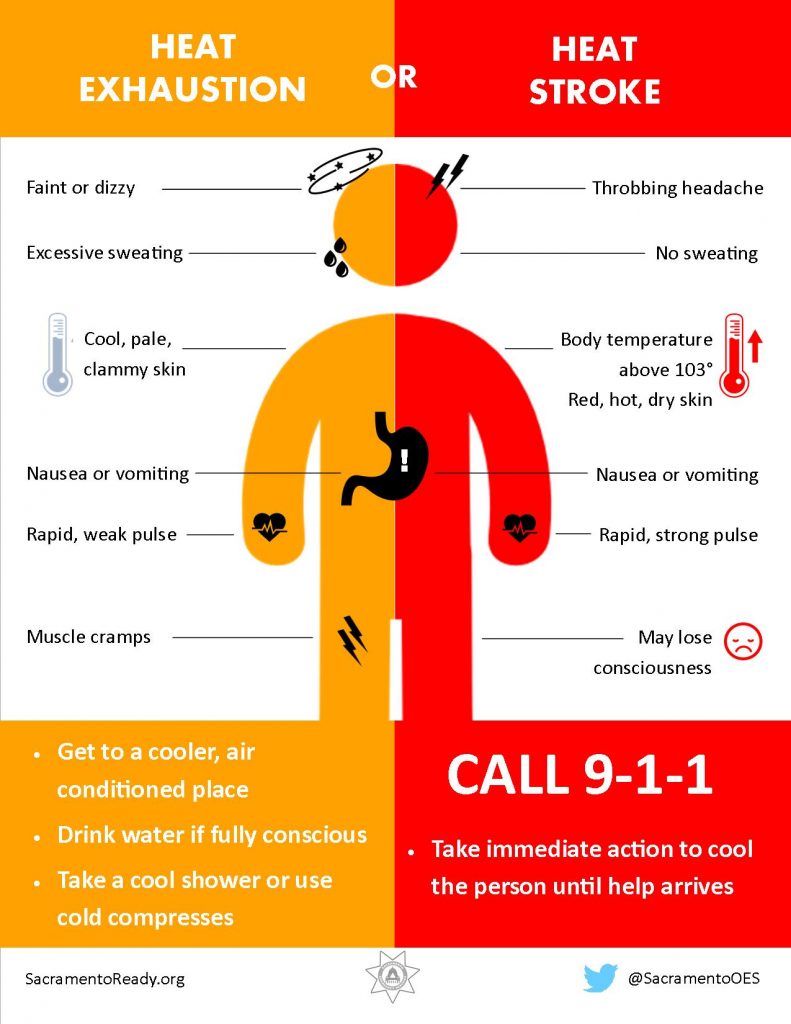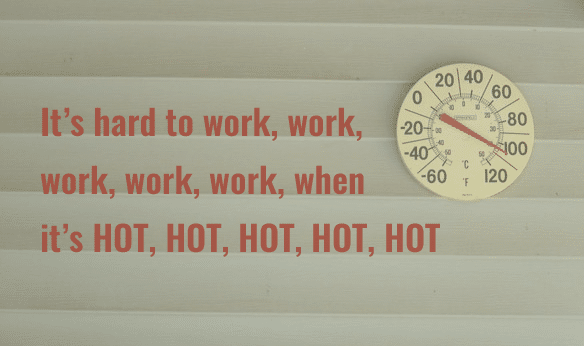Really, though!
As many of you “Montgomerians” and those in neighboring cities and states know, the recent temperatures we’ve been experiencing are no joke! With temperatures and heat indexes reaching over 100 degrees, taking extra precautions to keep yourself cool and hydrated is absolutely necessary.
Whether working at home or on the job site, it is up to you (and/or) those providing for you, i.e. supervisors, bosses) to know how much work is too much. Dehydration and over-working can lead to heat stress or worse–heat stroke.
If you are experiencing any of these symptoms, it is most definitely time for a break:
- muscle cramps
- dizziness
- headache
- nausea or vomiting
- fainting
- fast and weak pulse
- fast and shallow breathing
There are many ways you can prevent overheating, starting with the obvious–stay hydrated (note: do not consume extremely cold liquids for they can cause cramps).
- If possible, seek an air-conditioned environment. If you don’t have air conditioning, find somewhere that does!
- Wear lightweight clothing and avoid any unnecessary layers.
- Do not engage in strenuous activities, especially in the heat of the day for large amounts of time.
For those whose jobs require them to work outdoors in direct sunlight, employers should consider:
- Adjusting work schedules seasonally, or as needed. Working earlier in the mornings and later in the afternoon when the heat is not as intense is an example.
- Rotate employees by rotating job functions to minimize heat stress or overexertion.
- Provided covered shelter or shaded areas for workers to rest and get out from direct sun.
- Be sure to communicate with workers to make sure they maintain their body fluids at normal levels.
Not sure if you know the difference between heat exhaustion or stroke? Check out this infographic below!



